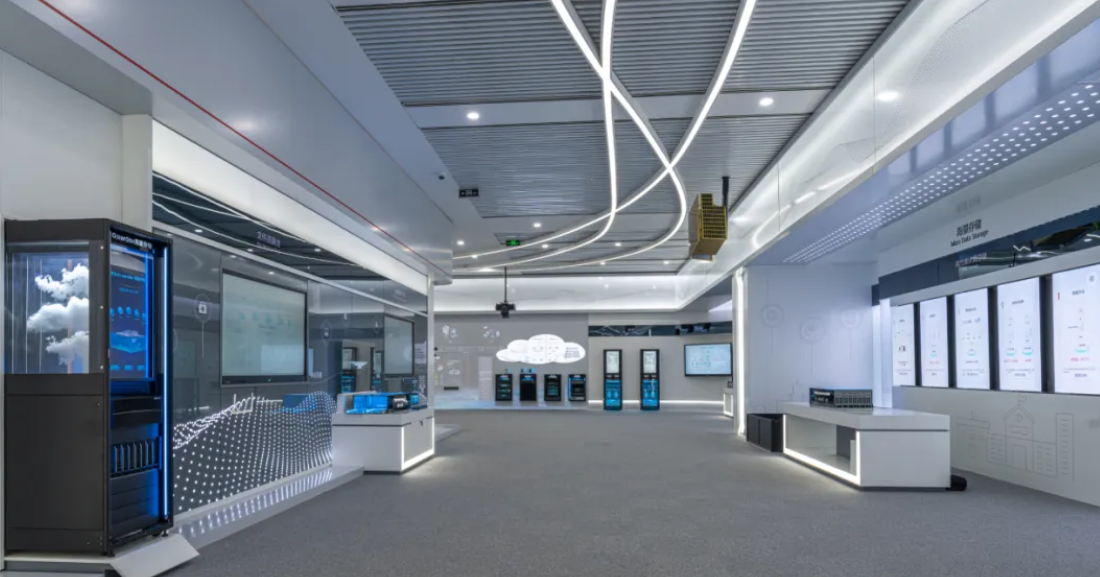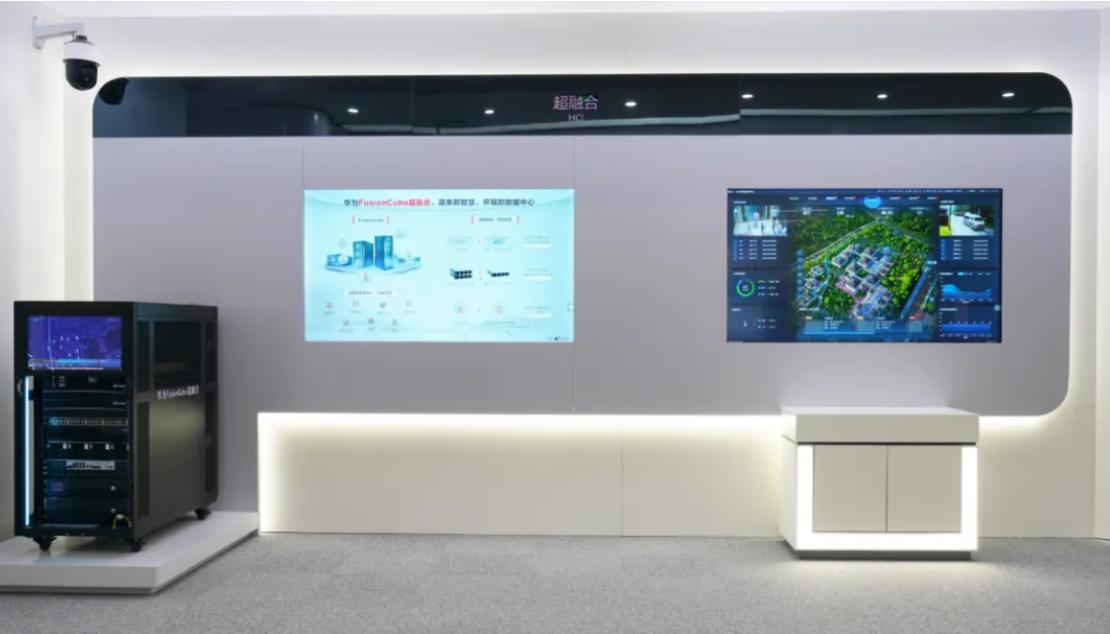【Enter the Enterprise】Huawei's Innovative Data Infrastructure Powers the Intelligent Transformation of Hospitals

On April 8th, the Sichuan Smart Hospital Information Construction Seminar, hosted by the Sichuan Provincial Bioinformatics Society and undertaken by Huawei Technologies Co., Ltd., was successfully held at the Huawei Chengdu Research Institute. Experts from over 20 hospitals across the province gathered for an in-depth discussion on the topic of smart hospital information construction.
In the construction of smart hospital information, the data infrastructure foundation is the most basic and core link. A stable and innovative data foundation not only ensures data security but also greatly improves business efficiency and enables business innovation. It helps hospitals build an integrated intelligent hospital system of medical treatment, services, and management, providing patients with higher quality, more efficient, safer, and more considerate medical services.
Huawei has been deeply involved in the medical field for many years and has launched a 1+4+N solution for hospitals. Through one set of data infrastructure foundations, it enables four centers: the traditional information center, the remote diagnosis and treatment center, the security and logistics center, and the scientific research big data center. This supports multiple hospital applications such as HIS/PACS/LIS/RIS/EMR and aids in the intelligent transformation of hospitals.
1. Green, Secure, and Reliable All-Flash Data Center to Make HIS, PACS Run Faster and More Stably
Traditional database systems such as HIS/LIS/EMR require data centers that are efficient, stable, and reliable. This ensures no system interruptions or long waits during patient visits, no lag in medical staff operations, and secure and traceable storage of all medical data.
In addition to stability and reliability, green energy saving and emission reduction are also important indicators for the construction of current hospital data centers. Therefore, building a green, secure, and efficient all-flash data center has gradually become a trend for hospital data centers. Through multi-level all-flash, achieve higher efficiency, higher security levels, no network bottlenecks, and smarter operations and maintenance, ensuring 24/7 stable operation of core applications like HIS/PACS databases.
Efficient and Stable
Based on new media such as SSD and SCM, along with innovative NVME protocols and NVMe over RoCE network technology, end-to-end all-flash acceleration can be achieved, perfectly matching the high requirements of the HIS system for system latency and concurrency, while also meeting the demands of efficient PACS queries. At the same time, based on years of technical accumulation, Huawei can achieve seven leading reliability guarantees at the module, system, and solution levels, escorting the efficient and stable operation of hospital HIS/PACS and other systems.
Security
In terms of data protection, all-flash technology can further enhance the level of data disaster recovery. From local dual-active/main-backup disaster recovery to remote 3DC, and then to disaster recovery in the cloud, comprehensive data protection is carried out. When the core HIS system fails, it can quickly recover and support the hospital's business, reducing the huge losses caused by business interruptions. Current backup storage is also gradually acquiring the characteristics of production storage. Huawei's backup all-in-one machine based on all-flash technology can achieve minute-level data recovery, eliminating the need for data recovery to the production device before use, reducing the recovery window for HIS/PACS business and reducing the risk of hospital core data loss.

Green
Data centers have long been major consumers of energy. If the storage media carrying core applications such as HIS/PACS is upgraded from HDD to SSD, SSD's power consumption can be reduced by 70% and space occupancy by 50% under the same capacity, thereby significantly reducing the total cost of the data center and leading the data center towards "carbon neutrality."
Intelligent Operations and Maintenance
Faced with the difficulty of data center operations and maintenance, Huawei believes that all-flash data centers should have the ability for intelligent operations and maintenance throughout the entire lifecycle. That is, at every stage of planning, construction, operations, and optimization, there should be automated and intelligent capabilities.
At the planning stage, precise planning is achieved, shifting the focus from traditional equipment upgrades to the full lifecycle of data; at the construction stage, global automatic distribution is implemented, moving from manual to automated; at the operations and maintenance stage, full-stack intelligent operations and maintenance are realized, changing from passive inspection to active discovery; at the optimization stage, agile optimization of configurations and automatic prediction and changes in resources are achieved, shifting from reliance on expert experience to intelligent algorithm autonomy. Through intelligent and efficient operations and maintenance, data centers can better and more timely serve all hospital business departments, and operations and maintenance management departments can also be simpler and more worry-free.
2. Mass Data Storage Allows Medical Research Big Data to be Stored, Flow, and Used Well
The all-flash data center introduced earlier is mainly used for the hospital's core production business, such as HIS/PACS database systems, where performance and reliability are the top priorities. In addition, hospitals have a lot of data that exists in the form of images, audio and video, text, etc. The characteristics of these data are particularly large in volume, but the performance and reliability requirements are not as high, which we call mass data. Mass data accounts for more than 80% of corporate data, and as analysis technology advances, the value of these data is also increasing.
High-Performance Computing for Genome Sequencing
High-Performance Computing (HPC), simply put, is the "strongest brain," capable of computing massive data and quickly finding answers. Genome sequencing HPC technology, as one of many high-performance computing technologies, is now widely used in various medical and non-medical fields, such as prenatal checks, genetic testing, cancer targeted therapy, etc.
Traditional genome sequencing data analysis requires storage that includes: 1. Scalability, the bioinformatics analysis process generally generates about 5 times the amount of intermediate files and results, requiring the storage system to have good scalability to meet the explosive growth of massive data; 2. High performance, the gene data analysis process requires storage that can simultaneously meet the demands for high bandwidth and low latency of massive files; 3. Cost, how to preserve data at low cost over the long term, and achieve efficient automatic management of massive data such as online, offline, and archiving, is also a challenge.
Huawei's OceanStor Pacific series, based on a new distributed architecture, can achieve agile scaling to cope with the surge of massive data growth in the genome sequencing HPC process; a single storage system can provide multiple protocols, supporting various bandwidth and latency performance loads required in the genome sequencing process, reducing the time loss caused by data migration and copying between different systems. At the same time, based on ultra-high-density hardware design, it has launched the two highest-performance and largest-capacity products in the industry, which can support automatic grading of data between high-performance and large-capacity storage, storing more data in the same cabinet space. While ensuring business performance, it reduces the overall cost of ownership.

3. Huawei's Hyper-Converged Storage, Full Line Mini Data Centers
Huawei's FusionCube hyper-converged is a product that integrates storage, computing, security, networking, etc. It adopts a full-stack design, not a simple integration, and can achieve efficient operation of various resources such as computing, storage, network switching, virtual machines, and achieve unified management, maintenance, and monitoring of the entire product. Huawei's hyper-converged comes in various forms (single frame, 8U, 24U, 42U) and can be selected according to actual customer needs. Simply put, it can provide customers with a simple, miniaturized, cabinet-level data center.
Huawei's FusionCube hyper-converged features simplicity, efficiency, and reliability. It can efficiently support large tertiary hospital databases, virtualization service clusters, and carry OA, desktop clouds, etc. It can also be used in small and medium-sized hospitals as a data center to support the hospital's core business.
In the medical field, Huawei has always been committed to closely integrating its profound product technology accumulation and rich application experience with the construction of medical informatization and smart medical construction. It has served more than 1,500 tertiary hospitals in China, escorting the digital transformation, smart medical construction, and healthy development of the medical industry!

